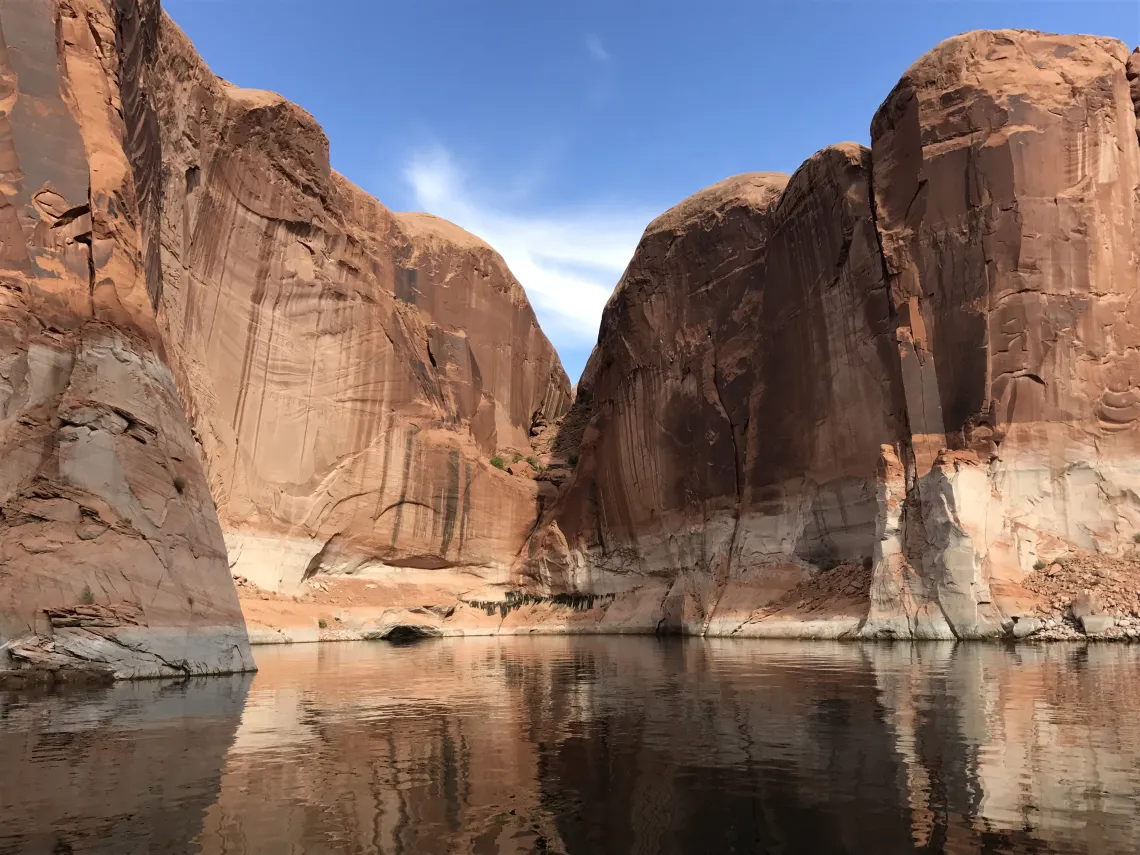Future of the Colorado River

The recently announced ‘Declaration of Shortage’ in the Lower Colorado River Basin places unprecedented focus on the dwindling water supply that the Colorado River provides to 40 million people. Images of high-and-dry boat ramps at Lake Powell reservoir and the white “bathtub ring” covering the bedrock walls of Lake Mead reservoir have spurred widespread discussion about the magnitude of water use that is sustainable in the future. In the midst of intense discussion about the allocation of a decreasing water supply, what might be the fate of the aquatic ecosystems and fish communities of the Upper Basin, the Grand Canyon, and the remaining riverine parts of the lower river?
The low runoff of the ongoing Millennium Drought is unprecedented. Natural flow of the Colorado River at Lees Ferry was 12.7 million acre feet per year (maf/yr) between 2000 and 2019, 17% less than the average annual natural flow between 1906 and 1999 (15.2 maf/yr). There is increasing evidence that the low runoff of the 21st century is partly due to a warmer atmosphere, increased evapotranspiration, and dry soils. Natural flow of the Colorado River is projected to further decline by as much as 30% by mid-century. Inflow to Lake Powell in 2021 was only 3.23 maf and was the second lowest since Glen Canyon Dam was completed in 1963. Circumstances now rival the most extreme droughts of the past thousand years, as estimated from tree ring data.
The allocation of water supply among the seven basin states and Mexico is the subject of on-going negotiation. Debate and discussion concern two time scales – confronting the current depletion of reservoir storage that threatens the ability to generate hydropower and reduces the security of water supply and developing robust policies that are adaptable to changing conditions of the next few decades. New research, such as what we are working on in the Future of the Colorado River Project, takes an in-depth look at how declining runoff and increased consumptive use of water from the river will impact water supplies and ecosystems, and considers how these risks can be addressed. The fundamental issue facing the watershed is the imbalance between declining water supply and increasing water use. There is no way to manage Lake Powell and Lake Mead to reverse the fundamental imbalance between supply and demand. There is no way to sustainably manage the Colorado River unless consumptive uses in the Lower and Upper Basins are reduced to match the available supply. Although it is impossible to precisely know annual weather patterns of the future, the risks of prolonged drought in a warming world are likely to severely challenge the current system. Our ability to control future climate is limited, and primarily related to the global effort to reduce carbon emissions. But control of future demands for water is manageable and requires a mix of limitations for future growth in Upper Basin water use, and a reduction in existing Lower Basin use. How we reach that balance is the question at the forefront for anyone who has stake in the fate of the Colorado River.
These decisions about water allocation and risk management inevitably will affect river ecosystems. Water released from a declining Lake Powell will be warmer than has been the case since the mid-1960s. Although warmer releases provide advantage to the Grand Canyon’s endangered humpback chub population, warm water also favors survival and expansion of nonnative species that compete or prey upon native species. Research funded by the Southwest CASC is supporting our effort to predict the outcomes of warmer reservoir releases and changing flow regimes on interactions between native and nonnative species in Grand Canyon and in the Upper Basin.

